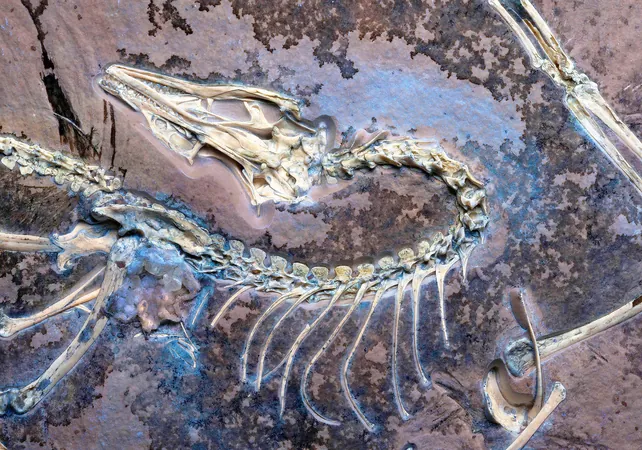
Evolution Revolutionized: Archaeopteryx Fossil with Preserved Soft Tissue Confirms Darwin's Legacy!
2025-05-24
Author: Ting
A Link Between Dinosaurs and Birds
The Archaeopteryx, a groundbreaking fossil, has long been hailed as a key piece of evidence for Charles Darwin's theory of evolution, connecting modern birds to their ancient dinosaur ancestors. This iconic fossil continues to shed light on the evolutionary journey of flight, with new findings emphasizing its significance even after 160 years since its initial discovery.
The Chicago Archaeopteryx: A Remarkable Find
Researchers at the Field Museum have recently studied what they’re calling the “Chicago Archaeopteryx,” a remarkably preserved specimen unveiled to the public in 2024. This fossil, showcasing extraordinary preservation aided by cutting-edge technology, is one of the most complete Archaeopteryx finds to date.
Smallest Archaeopteryx Ever Discovered
Unearthed from the famous Solnhofen limestone in Germany, this tiny Archaeopteryx was only the size of a pigeon! Discovered in private possession since before 1990, it was finally donated to the Field Museum in 2022 thanks to the efforts of dedicated fossil enthusiasts.
Transformative Preparation Techniques
Preparing this unique fossil took over a year, as the soft tissues were nearly indistinguishable from the surrounding rock. The meticulous work of the Field Museum team involved UV lighting to identify delicate soft tissues and advanced CT scanning to avoid damaging the bones.
Unprecedented Details Revealed
The Chicago Archaeopteryx has unveiled intricate details previously unseen in prior specimens. This careful preparation allowed scientists to observe features that were likely present in older fossils but lost to rougher replication methods.
The Anatomy of Flight
Dubbed the first feathered dinosaur that could actually fly, Archaeopteryx helps answer pivotal questions about the development of flight in dinosaurs. Its unique bone structure and feather configuration, especially the long upper arm feathers, hint at its aerial capabilities, suggesting an evolutionary leap distinct from its non-avian relatives.
A Historic Implication for Evolution
The presence of specialized feathers in Archaeopteryx indicates a significant evolutionary transition, suggesting that flight may have developed multiple times among different dinosaur lineages. This compelling evidence adds weight to the theory of repeated evolutionary attempts at flight.
A Journey of Discovery Continues
Even after a century and a half of study, the Chicago Archaeopteryx continues to offer new insights, with scientists excitedly uncovering fresh details about its anatomy. This latest research marks merely the beginning of what could be an even greater understanding of the origins of flight.
Nature's Newest Chapter
With the completion of this study published in *Nature*, the implications of the Chicago Archaeopteryx extend far beyond mere fossils, reinforcing Darwin's revolutionary ideas and highlighting the ongoing journey of discovery in the realm of evolution.



 Brasil (PT)
Brasil (PT)
 Canada (EN)
Canada (EN)
 Chile (ES)
Chile (ES)
 Česko (CS)
Česko (CS)
 대한민국 (KO)
대한민국 (KO)
 España (ES)
España (ES)
 France (FR)
France (FR)
 Hong Kong (EN)
Hong Kong (EN)
 Italia (IT)
Italia (IT)
 日本 (JA)
日本 (JA)
 Magyarország (HU)
Magyarország (HU)
 Norge (NO)
Norge (NO)
 Polska (PL)
Polska (PL)
 Schweiz (DE)
Schweiz (DE)
 Singapore (EN)
Singapore (EN)
 Sverige (SV)
Sverige (SV)
 Suomi (FI)
Suomi (FI)
 Türkiye (TR)
Türkiye (TR)
 الإمارات العربية المتحدة (AR)
الإمارات العربية المتحدة (AR)